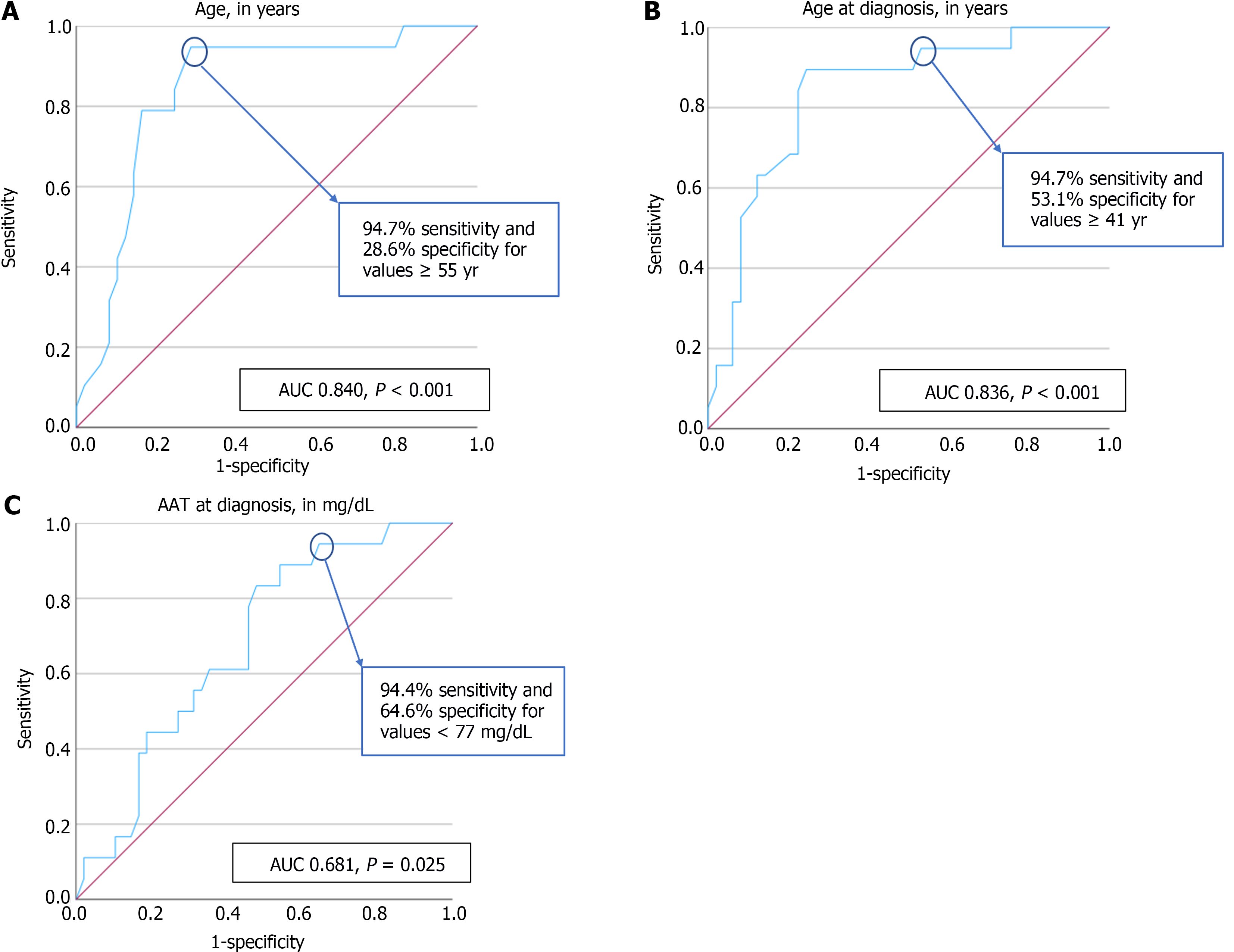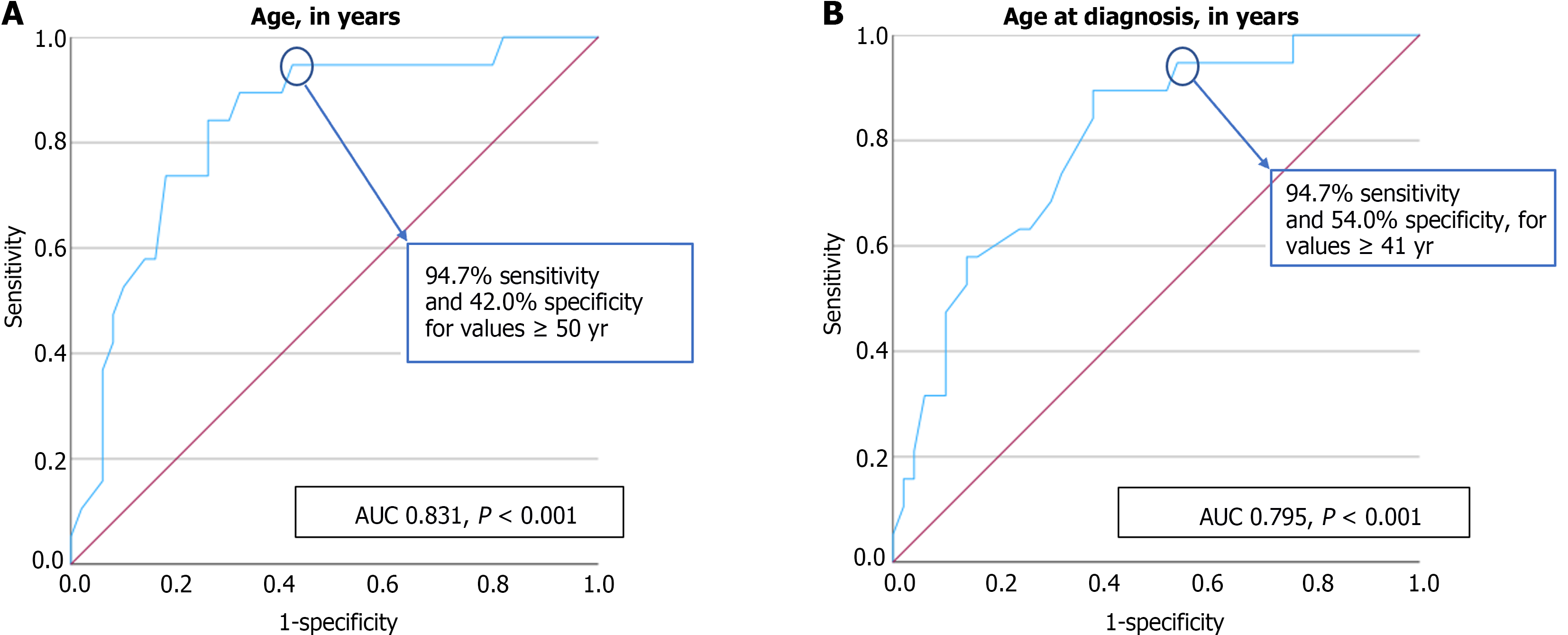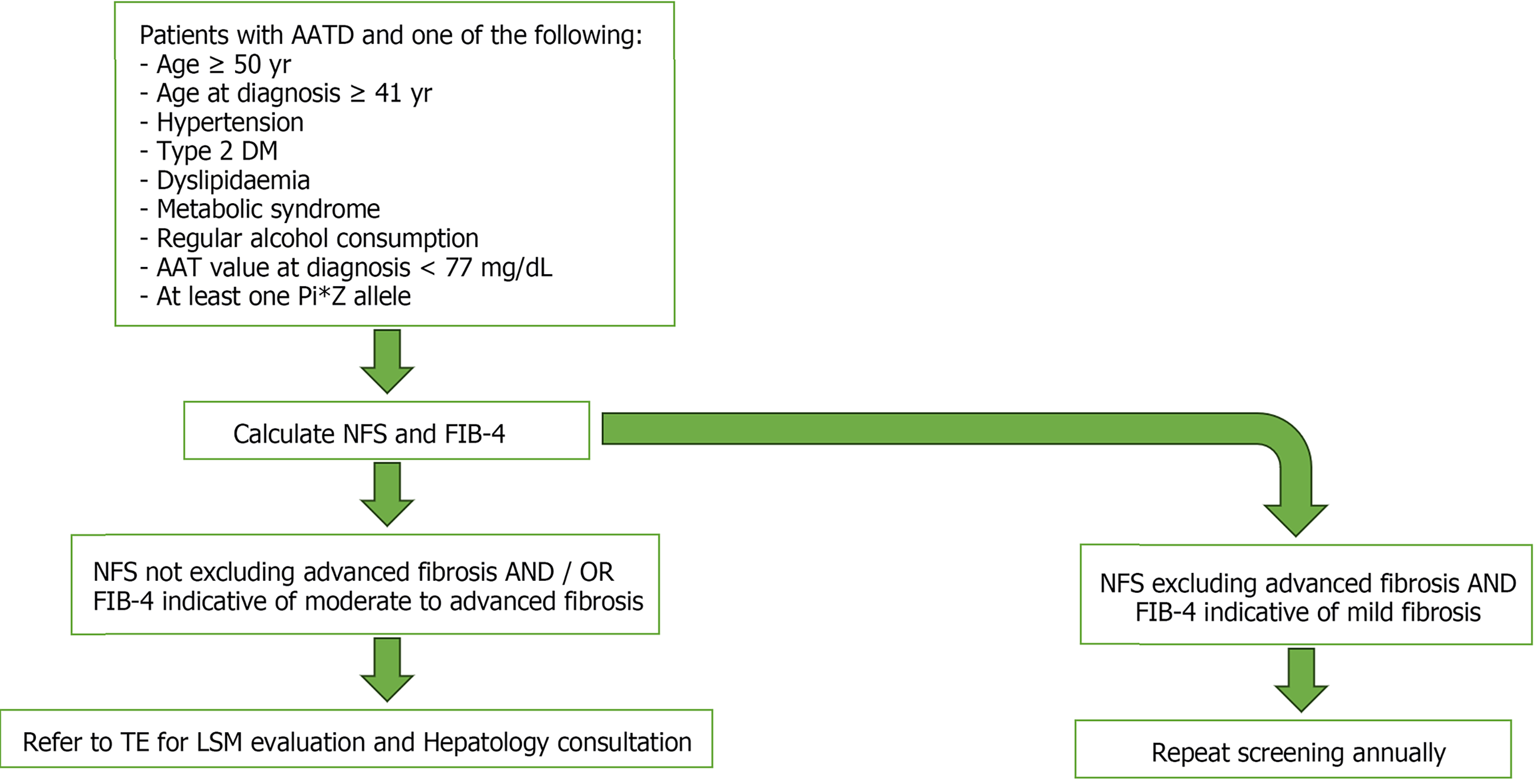Copyright
©The Author(s) 2024.
World J Hepatol. Aug 27, 2024; 16(8): 1099-1110
Published online Aug 27, 2024. doi: 10.4254/wjh.v16.i8.1099
Published online Aug 27, 2024. doi: 10.4254/wjh.v16.i8.1099
Figure 1 Receiver operating characteristic curves illustrating the diagnostic ability of the patients’ age, age at diagnosis, and alpha-1 antitrypsin at diagnosis in predicting a nonalcoholic fatty liver disease fibrosis score value that does not exclude advanced fibrosis.
A: The patients’ age; B: Age at diagnosis; C: Alpha-1 antitrypsin at diagnosis. AAT: Alpha-1 antitrypsin; AUC: Area under the curve.
Figure 2 Receiver operating characteristic curves illustrating the diagnostic ability of the patients’ age and age at diagnosis in predicting a fibrosis-4 index indicative of moderate to advanced fibrosis.
A: The patients’ age; B: Age at diagnosis. AUC: Area under the curve.
Figure 3 Proposed algorithm for the screening of liver disease in patients with alpha-1 antitrypsin deficiency.
DM: Diabetes mellitus; AAT: Alpha-1 antitrypsin; FIB-4: Fibrosis-4 index; NFS: Nonalcoholic fatty liver disease fibrosis score; AATD: Alpha-1 antitrypsin deficiency; TE: Transient elastography; LSM: Liver stiffness measurement.
- Citation: Ferreira AI, Guimarães C, Macedo Silva V, Xavier S, Magalhães J, Cotter J. Alpha-1 antitrypsin deficiency and Pi*Z allele as important co-factors in the development of liver fibrosis. World J Hepatol 2024; 16(8): 1099-1110
- URL: https://www.wjgnet.com/1948-5182/full/v16/i8/1099.htm
- DOI: https://dx.doi.org/10.4254/wjh.v16.i8.1099















